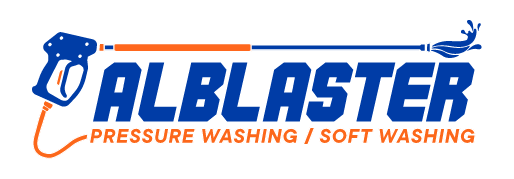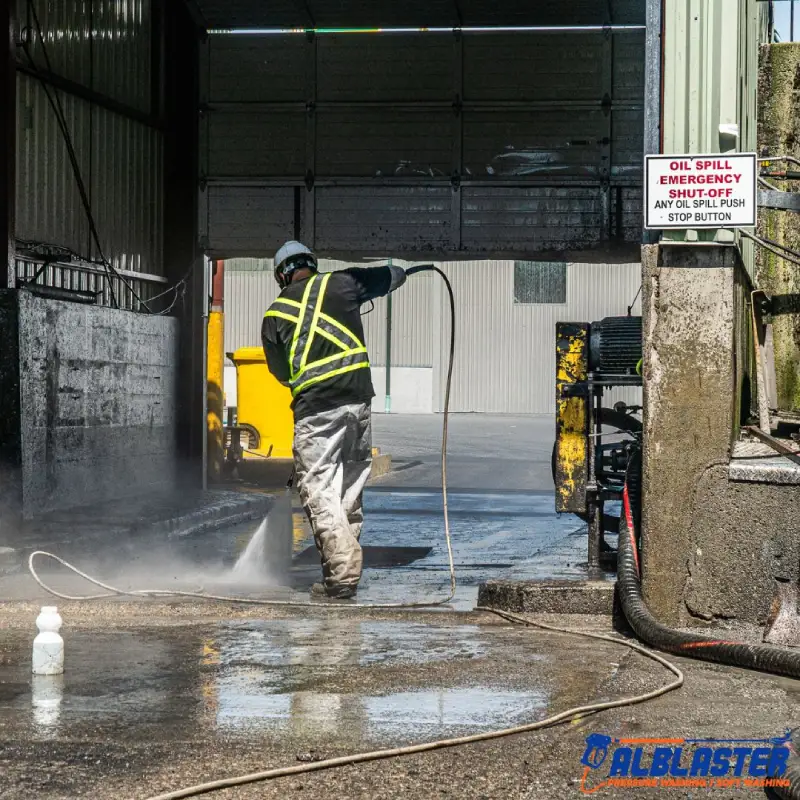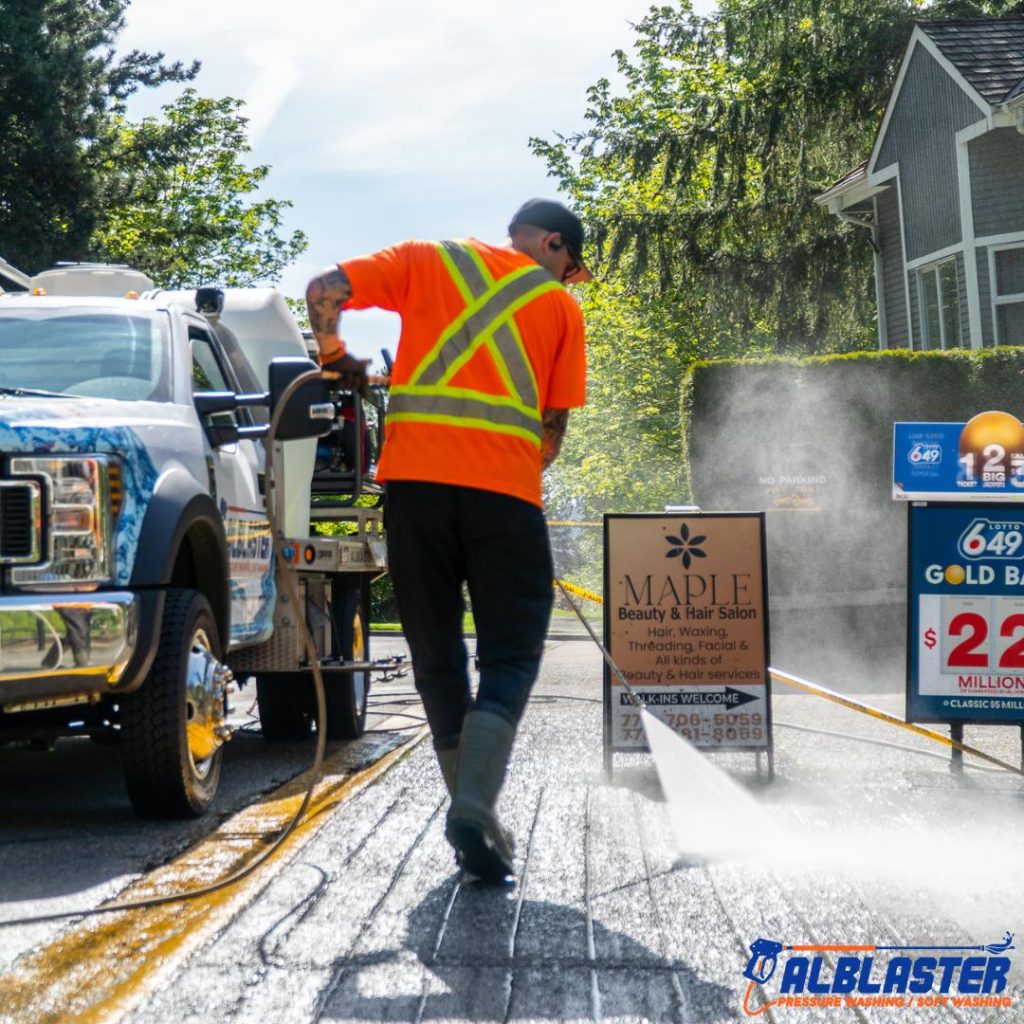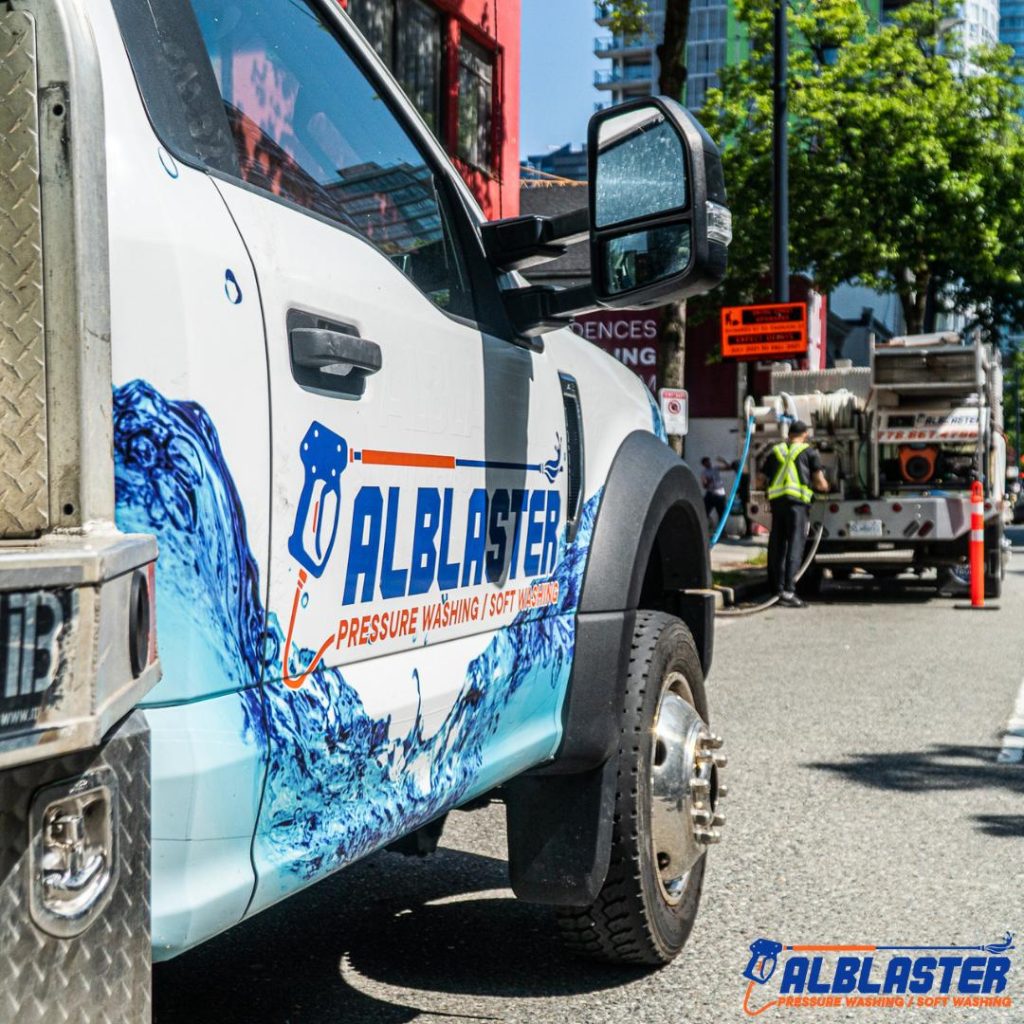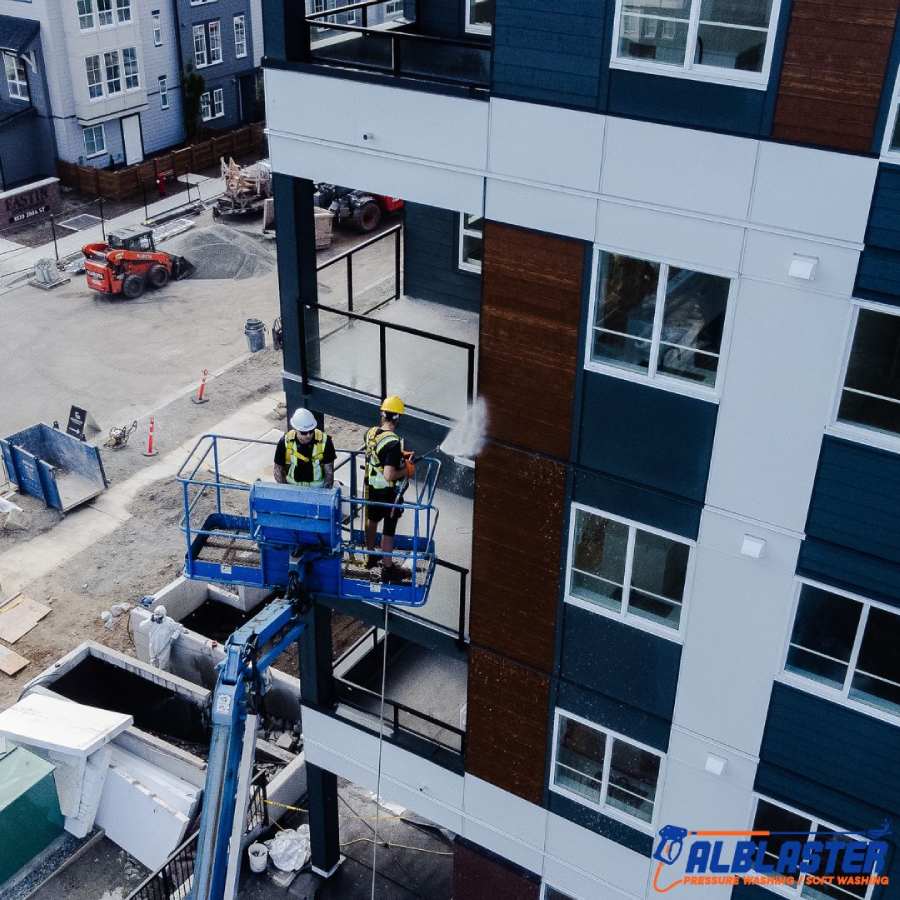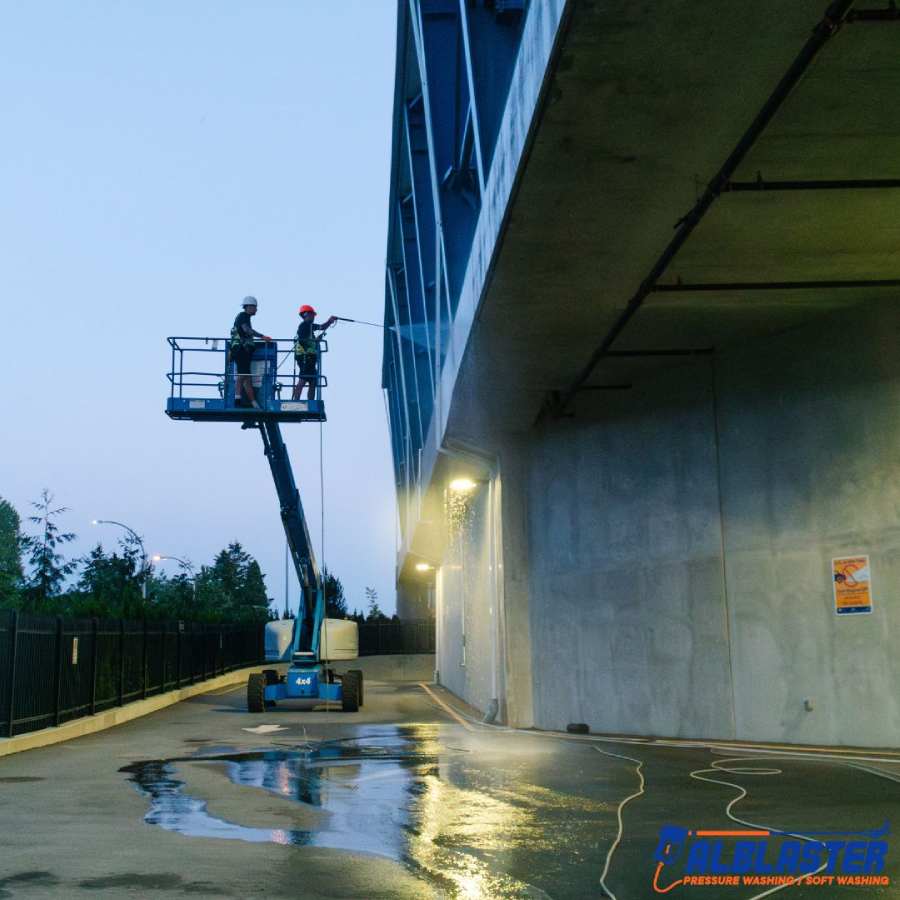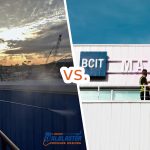What is the Difference Between Soft Washing and Pressure Washing
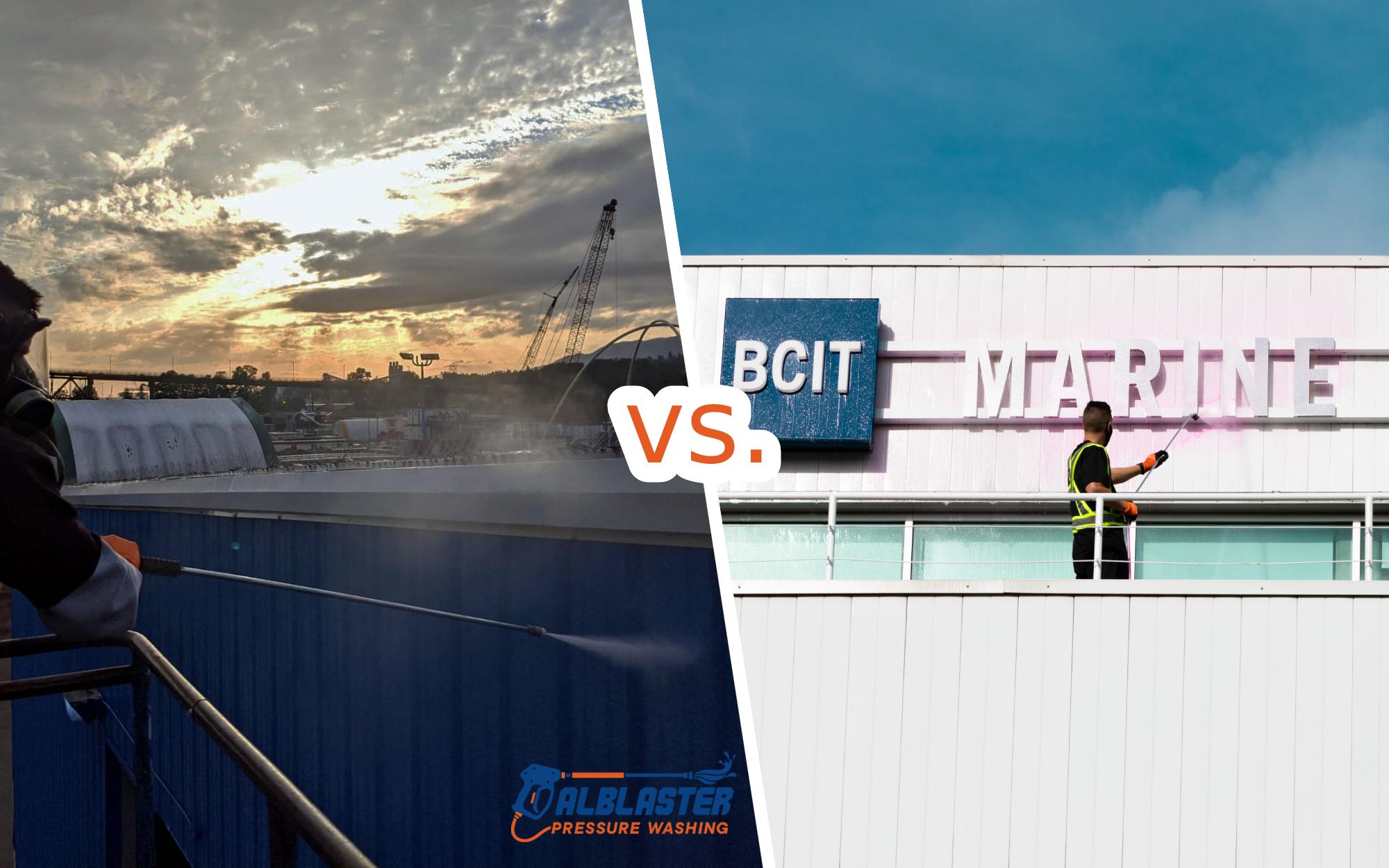
So, what specifically is the difference between soft washing and pressure washing?
Pressure Washing
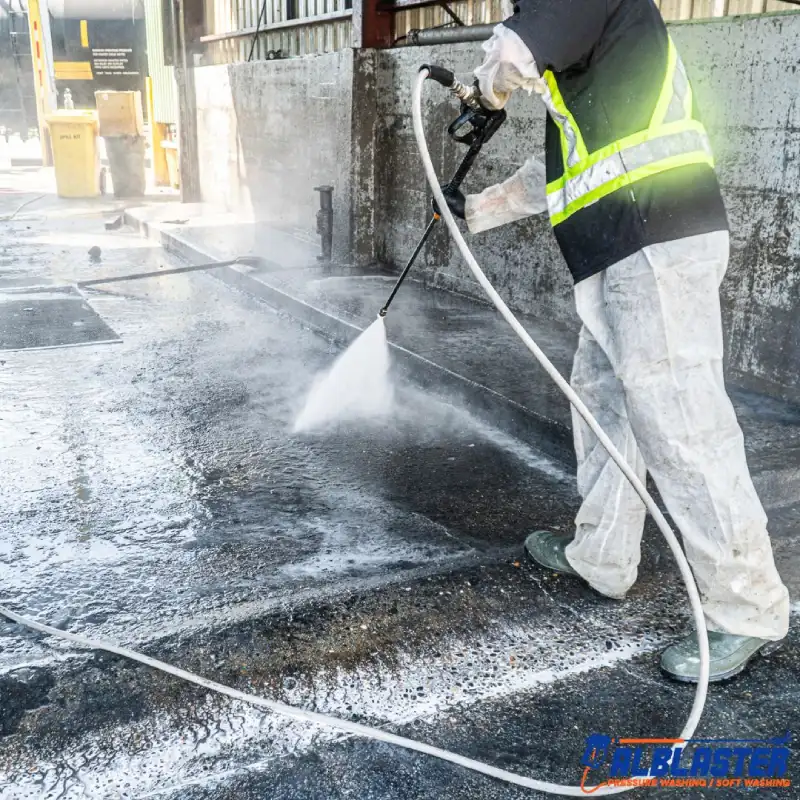
Pressure washing is an effective method for removing tough, built-up mold, mildew, dirt, and grime on hard, durable surfaces. This technique is ideal for driveways, cement patios, sidewalks, and industrial flooring, where debris accumulates due to heavy use. Using specialized equipment, pressure washing delivers high-pressure water that cuts through layers of dirt and stains—but must be handled with caution, as improper use can lead to surface damage or injury.
Definition
- A high-pressure cleaning method that uses unheated water to dislodge contaminants, dirt, and loose paint from sturdy, non-porous surfaces.
Ideal Applications
- Durable surfaces – Best for brick walls, concrete walkways, metal exteriors, and loading docks.
- Industrial and commercial maintenance – Used for parking lots, warehouses, and factory floors to remove grease, oil stains, and debris.
- Pre-painting surface prep – Ensures clean, smooth surfaces before applying coatings or sealants.
Key Benefits
- Versatility – Can be used on various exterior surfaces without requiring special treatment.
- Cost-effective – Provides deep cleaning with minimal labor, reducing long-term maintenance costs.
- Rapid results – Quickly restores surfaces to a clean, professional appearance.
Considerations
- Potential damage – Excessive pressure can erode materials, causing surface wear and water intrusion.
- Environmental impact – Wastewater runoff may contain contaminants, requiring proper disposal methods to avoid regulatory issues.
- Operator safety – High-pressure water can cause injuries; professional handling is recommended.
Real-World Applications of Pressure Washing
- Commercial parking structure – A retail property employed pressure washing to remove heavy oil stains and tire marks, enhancing safety and improving the overall appearance for customers.
- Warehouse loading dock – Regular pressure washing schedules helped remove built-up grime, oil spills, and debris, reducing slip hazards and maintaining a clean working environment.
- Strata sidewalks and common areas – A multi-unit residential complex used pressure washing to remove accumulated dirt, algae, and stains from walkways, ensuring a clean and slip-resistant surface for residents.
- Industrial facility exterior – A large-scale warehouse relied on pressure washing to maintain the cleanliness of exterior walls and entrance areas, preventing long-term staining and material degradation.
Soft Washing
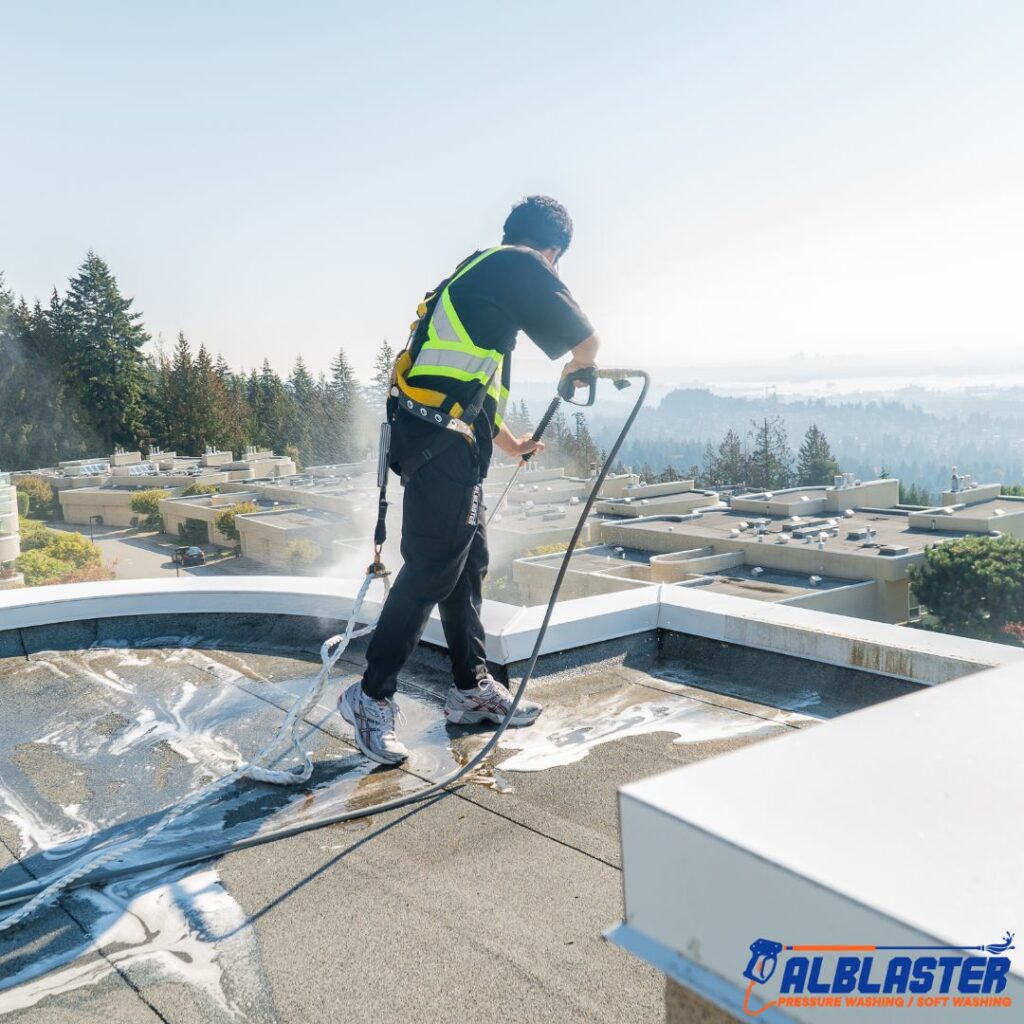
is a low-pressure cleaning method designed to safely remove dirt, mold, mildew, and organic buildup from delicate surfaces. Unlike pressure washing, which relies on high-pressure water to remove grime, soft washing uses specialized cleaning detergents to break down contaminants before being rinsed off with water at a safe, low pressure.
This method is ideal for surfaces that could be damaged by high pressure, such as siding, roofs, awnings, and painted exteriors. Soft washing is a safer, more effective option for maintaining commercial buildings, strata properties, and industrial facilities without the risk of surface erosion.
Alblaster uses a cleaning solution that is frequently used today– Sodium Hypochlorite (bleach) with a surfactant (or foaming agent). It is safe for small amounts of this solution to be used with water for cleaning. It is the same solution used for treating drinking water and cleaning swimming pools, although amounts are slightly higher than swimming pool water. With this solution, unsightly and damaging growth is dissolved, and debris is rinsed away with low-pressure water.
Definition
- A low-pressure cleaning technique that uses detergents to dissolve dirt, mold, and algae, which are then rinsed away with water at safe pressure levels.
Ideal Applications
- Building exteriors – Used for cleaning vinyl siding, stucco, and painted surfaces without damage.
- Roofs – Removes algae, moss, and mold while preserving roofing materials.
- Storefronts and awnings – Cleans fabric, glass, and signage without causing wear.
- Industrial facility walls – Prevents organic growth while maintaining a clean, professional look.
- Parking garage ceilings and walls – Removes exhaust buildup and mildew without damaging surfaces.
Key Benefits
- Surface protection – Does not damage fragile materials like wood, painted surfaces, or roofing.
- Long-lasting results – Cleaning agents prevent organic growth from returning quickly.
- Eco-friendly approach – Uses biodegradable cleaning solutions to minimize environmental impact.
Considerations
- Chemical application – Requires careful use of cleaning agents to prevent overuse.
- Drying time – Takes longer than pressure washing due to reliance on detergents.
- Not for tough stains – Less effective for removing deep oil stains or hard grime.
Real-World Applications of Soft Washing
- Strata building exteriors – Used to safely remove dirt, algae, and mold from vinyl and stucco surfaces without causing damage.
- Storefronts and awnings – Applied to clean awnings, glass panels, and signage, ensuring a professional and well-maintained look for businesses.
- Industrial facility walls – Helps maintain cleanliness by removing organic buildup and preventing long-term staining.
- Commercial roof cleaning – Soft washing removes algae and mildew from delicate roofing materials, extending roof lifespan.
- Parking garage ceilings and walls – Cleans discoloration and exhaust buildup while maintaining the integrity of painted surfaces.
Know the Difference Between Soft Washing and Pressure Washing
If you do want to keep it all clean and undamaged, the washing process used should be considered carefully. Some parts of your property that have tough, hard surfaces, with a build-up of grime, require pressure washing. Other parts of your property, like shingles (siding), or roofing should be soft washed so as not to damage the surface.
Benefits vs Drawbacks of Soft Washing and Power Washing
| Washing Treatment Type | Benefits | Drawbacks |
| Soft Washing | Gentle cleaning, safe for delicate surfaces – Effective against mold, mildew, algae, and bacteria – Extends lifespan of surfaces – Improves curb appeal | May require multiple treatments for stubborn stains – Not ideal for heavily soiled surfaces |
| Power and Pressure Washing | Powerful cleaning for tough dirt, grime, and stains – Removes paint, loose mortar, and graffiti | Can damage delicate surfaces if not used properly – Requires more expertise and caution |
Soft Washing & Power Washing Head to Head
| Washing Treatment Type | Temperature | Cleaning Solution | Pressure (PSI) | Best for |
| Soft Washing | Up to 60 degrees celsius | Uses specialized, biodegradable detergents | 500 PSI or below | Wood, Vinyl, Strata |
| Power Washing / Pressure Washing | Up to 155 degrees celsius | Predominantly focuses on water pressure | 1,500 – 4000 PSI | Driveways, Parking Lots, Walkways, Concrete, Sidewalks |
Choosing the Right Washing Method
- Soft washing is ideal for most exterior surfaces, especially those prone to organic growth like mold, mildew, and algae. It’s a safer option for delicate materials like vinyl siding, wood shingles, and asphalt roofs.
- Power washing is best suited for tough cleaning jobs on hard surfaces like concrete, brick, and stone. It’s not recommended for delicate surfaces, as the high pressure can cause chipping, cracking, and even structural damage.
Additional Considerations for Power Washing and Soft Washing
- Always consult a professional: If you’re unsure which method is right for your needs, it’s best to consult a professional cleaning company. They have the expertise and experience to assess your property and recommend the safest and most effective cleaning method.
- Safety first: Your pressure washing contractor will prioritize safety by wearing proper personal protective equipment (PPE) and following the manufacturer’s instructions carefully.
By understanding the differences between soft washing and power washing, you can make an informed decision about the best approach for your building’s exterior cleaning needs, ensuring that it is sparkling clean.
Soft Washing and Pressure Washing FAQ
Soft Washing or Pressure Washing, Always Professionally Clean
A dedicated service like Alblaster knows the job and has this process down. When you’ve cleaned as much property as we have, you’re ready for just about anything. We know what method is best and just how to safely and effectively clean everything on your property. The Alblaster crew will bring all of the equipment to address any situation.
But that’s not all, Alblaster does a thorough job and always follows through. We don’t think you’ll find anything left to do once we have completed our job, but if you find anything, we’ll come back and get it done.
When you think about all of the benefits of letting a professional outfit like Alblaster do the job, we think you’ll decide to call Alblaster. Bottom line, we’ll save you the cost of time and trouble.
